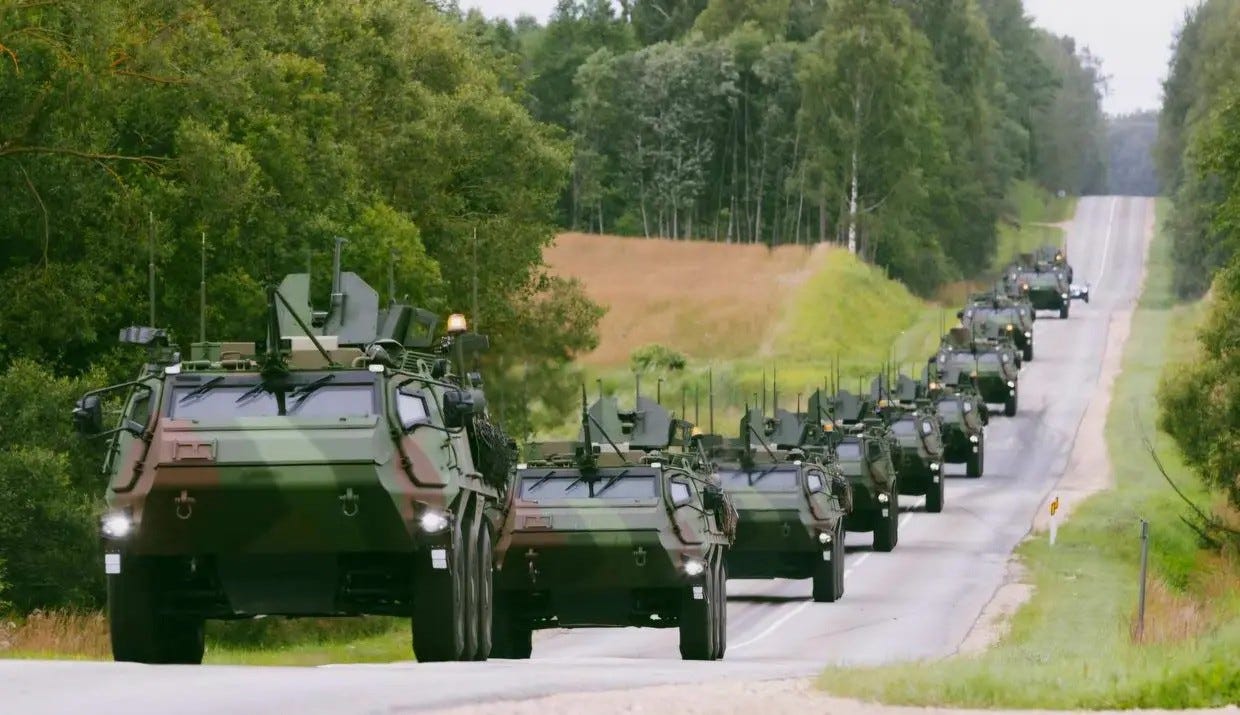Latvia’s Patria 6x6s Roll East: The Baltic Shield Sends Steel to Ukraine
Latvia's Fleet of Patria's Finally Arrive
Just a quick update today, friends.
Latvia just confirmed the transfer of 42 brand-new, locally-built Patria 6x6 armored personnel carriers (APCs) to Ukraine.
The deal, approved July 1st by Latvia’s Cabinet of Ministers, is one of the biggest Baltic armor handovers since the Russian invasion, and is a statement, both about the future of Ukraine’s mechanized punch and the existential stakes for Latvia and the entire eastern NATO flank.
Latvia knows that Ukraine isn’t just fighting for itself. Every armored vehicle that rolls across Zaporizhzhia is another kilometer Russia isn’t rolling toward Riga, Vilnius, or Tallinn. Latvia, staring across the Daugava River at a resurgent Russia, is investing in its future security by sending these APCs to Ukraine.
In other words, Ukraine is the shield; the Baltics are the sword waiting behind it.
CAVS: The Multinational Answer to Russia’s Rolling Thunder
Let’s talk about why CAVS isn’t just another acronym rattling around in some dusty Brussels briefing, it's a blueprint for a future where Europe doesn’t get caught flat-footed by the next war.
The Common Armored Vehicle System was born in the shadow of a Russian threat that just wouldn’t quit.
Finland, Latvia, Sweden, and Germany saw the writing on the wall: if Russia is willing to roll the dice in Ukraine, who’s to say it stops at the Dnipro? Thus, CAVS was born: a multinational, government-to-government agreement to build an armored vehicle platform so standardized, even a German logistics officer could love it.
The genius here isn’t just in pooling resources and sharing development headaches. CAVS means you get a family of 6x6 armored vehicles, APCs, command posts, medevacs, mortar carriers, you name it, that all run on the same parts, use the same maintenance playbook, and speak the same digital language.
Imagine being able to swap a busted transmission between a Latvian and a Swedish Patria in the same forward repair shop. That's more than convenience, it's battlefield insurance.
By combining procurement, CAVS partners can buy more vehicles for less, accelerating delivery to the frontlines and sidestepping the political paralysis that has dogged so many European defense projects. Local supply chains get a shot in the arm; see Latvia’s Valmiera plant churning out hulls and bolting on armor plates. R&D is shared, upgrades are rolled out across the entire fleet, and life cycle management becomes less about firefighting and more about true sustainment.
And CAVS doesn’t stop at the factory gate. There’s a forward-thinking Life Cycle Management agreement in place, so the vehicles you get today are still effective (and upgradable) a decade from now.
When Finnish, Latvian, and German commanders roll into a joint exercise, everyone’s on the same radio net, everyone’s reading the same dash gauges, and everyone’s got a logistics trail that won’t quit at the border.
Wait, Wes. Are there any downsides to standardization?
Absolutely. Standardization is the golden calf of modern military logistics… until it isn’t.




